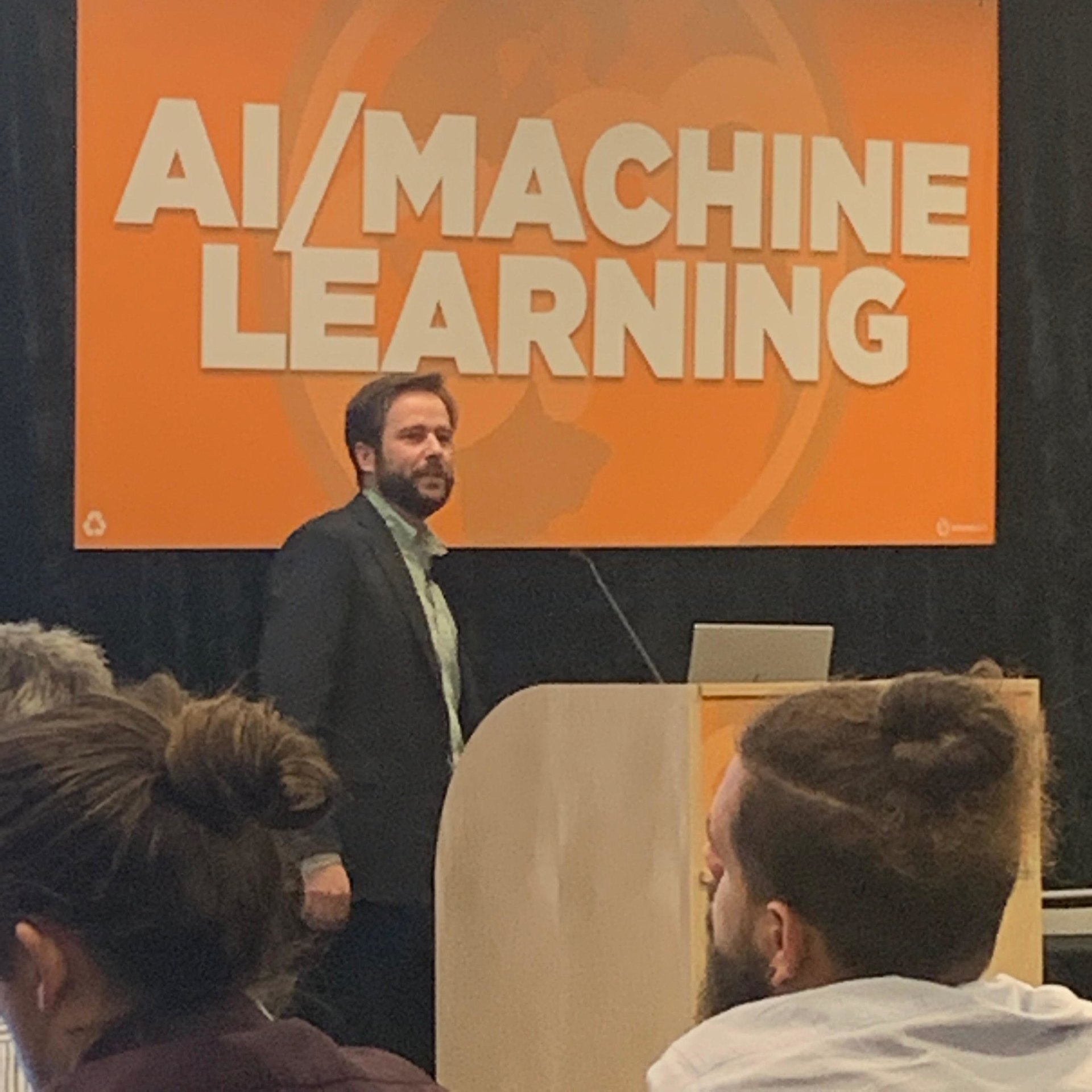Content creation has never been harder, and workflows to maximize content performance are important. Since content creation takes time, teams want to spend that time wisely.
Two ways to achieve high performing content include:
· Produce content based on research that you know has a chance to perform based on industry knowledge, keyword research and trends reviews.
· Update existing content to maximize it.
“More content isn’t always the answer,” said Jeffrey Coyle, co-founder of MarketMuse, during his talk at Content Marketing World in Cleveland in September 2019.
And only updating existing content isn’t the answer either, he said.
A quick show of hands showed that less than five percent of attendees in his session ever update content. “Sometimes that number is even lower. So you are ahead of the curve.”
Coyle quickly added that just by thinking about AI and machine learning in marketing you are ahead of the curve and most marketers haven’t even started.
He mentioned five areas where AI can make a difference.
1. Analyze existing content for gaps and opportunities
This includes looking at:
· how pages on your site are grouped
· what topics are performing well
· if top performers are even aligning with current business goals.
When top performers don’t align with goals, one way to capitalize on this is to funnel audience members toward the current goals.
Of course, this sounds like a traditional content audit, which have been done for a while. “That usually comes at the cost of $125/hour,” Coyle said.
As this moves into the AI arena, audits can be done quicker and be used live by content strategists.
2. Choose keywords and topic clusters for content optimization
Using the high performers that are aligned with business goals can help here. After looking at your own content, match it against what your competitors are ranking for and what kind of content they are creating. Find the gaps and create content around those areas.
“You can do that faster with AI,” Coyle said. “It takes 15 hours manually and minutes with AI.”
It’s certainly an accepted strategy to try to rank for keywords. Coyle suggests to try to rank for a cluster of topics and areas that are relevant to you and your audiences.
3. Construct buyer personas based on needs, goals, intent and behavior
Creating personas means we know who we are:
· trying to reach
· creating content for our audience should solve their problems. Many writers – including ones at DMN and AC Business Media, use personas to create better content.
AI can help us keep personas updated, keep an eye on their needs, behavior and ultimately help us drive business results.
4. Create data-driven content
Data-driven content also means to not use outdated metrics and practices. For example, Coyle mentioned that trying to rank for high-volume keywords can be less than strategic when there’s no context. Think about the context for the reader and also how it fits into your business strategy.
5. Discover insights into top-performing content and campaigns
Predictive analytics often still means that marketers manually look at Google Analytics and make educated decisions.
· Is content comprehensive?
· Know where it stands in the field of competitors.
· Predict impact before publishing.
“Don’t publish content that has no chance of performing,” Coyle said. “If 10 percent is the efficiency rate, AI can help you turn that into 50 percent.”
By efficiency rate, Coyle means what percentage of content performs well. So 10 percent means just 1 of 10 articles performs above average. Raising the rate to 5 out of 10 can increase the performance 5x.
Being able to push up your efficiency rate can help writers be more efficient, get some time back and spend more time on content that has a better chance to perform.
Using technology – including AI and machine learning – can help content teams spend their time more wisely and increase the volume of high-performing content.
Featured Post: Marketing: Meaning, Strategies, and Careers








